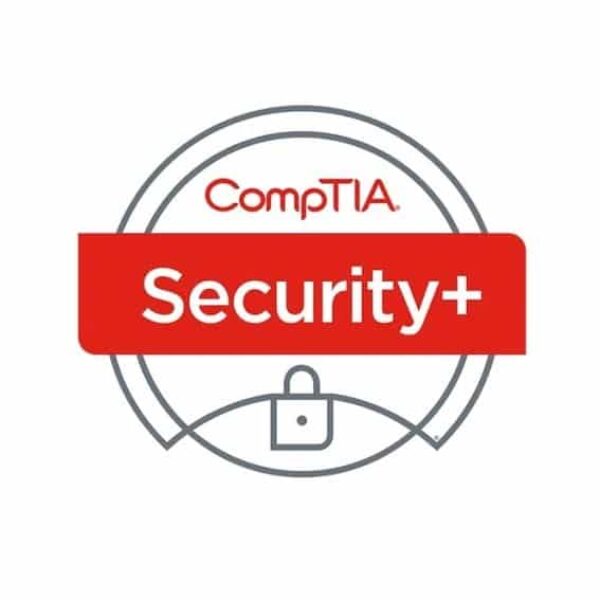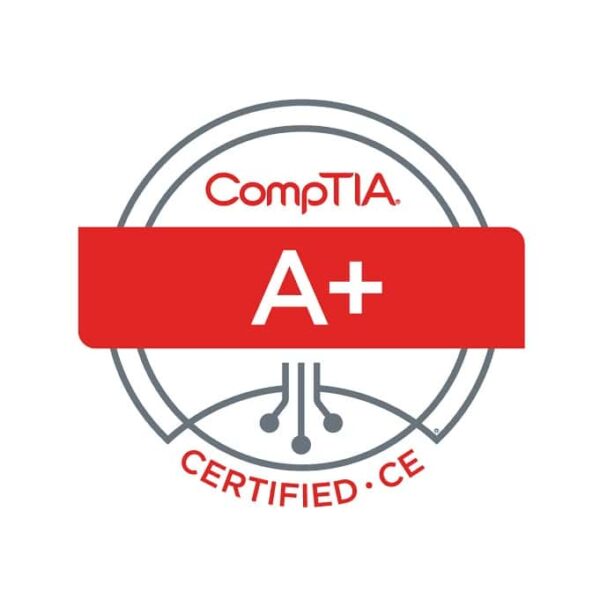Learn the fundamentals to computer security and how they work. These are my detailed study notes from when i passed the CompTIA A+ and Sec+ courses.

secPlus
Useful Acronyms You Should Know The world of cybersecurity and the CompTIA Security+ certification course is filled with a plethora of acronyms, each representing essential concepts, technologies, and standards. In this post, we present a comprehensive list of these acronyms to serve as a quick reference and guide for both newcomers and seasoned cybersecurity professionals. Acronym Definition 3DES Triple Data Encryption Standard AAA Authentication, Authorization, and Accounting ABAC Attribute-based Access Control ACL Access Control List AD Active Directory AES Advanced…

secPlus
Module 11: The Business Continuity Plan (BCP) is an integral part of an organization's overall strategy, ensuring that it can continue its essential operations in the face of various disruptions. In this post, we will explore the key principles, strategies, and best practices associated with BCP, a vital topic for cybersecurity and your CompTIA Security+ certification.Ensuring Business Continuity Select Business Continuity and Disaster Recovery Processes Develop a Business Continuity Plan Business Continuity and Disaster Recovery Business continuity - A collection…

secPlus
Module 10: In the world of cybersecurity, it's not a matter of "if" but "when" a security incident occurs. Being prepared to address these incidents is essential for safeguarding an organization's data and reputation. In this post, we'll explore the key principles, strategies, and best practices for addressing incidents as part of your CompTIA Security+ cybersecurity journey.Addressing Security Issues Troubleshoot Common Security Issues Respond to Security Incidents Investigate Security Incidents Access Control Issues Access Issue Troubleshooting Tactic Authentication Issues Check…

secPlus
Module 9: Operational security (OPSEC) is a fundamental element of cybersecurity, focusing on safeguarding an organization's critical information and assets from a variety of threats. In this post, we'll explore the key principles, strategies, and best practices of operational security for a CompTIA Security+ professional.Implementing Operational Security Evaluate Security Frameworks and Guidelines Incorporate Documentation in Operational Security Implement Security Strategies Manage Data Security Processes Implement Physical Controls Security Frameworks A conceptual structure for security operations in the organization. Defines how…

secPlus
Module 8: Cryptography plays a pivotal role in safeguarding digital information and communications in the realm of cybersecurity. It is the science of converting plaintext data into a secure and unintelligible format, ensuring that only authorized parties can decipher it. In this post, we'll explore the key concepts of cryptography and its crucial applications for a CompTIA Security+ professional.Implementing Cryptography identify Advanced Cryptography Concepts Select Cryptographic Algorithms Configure a Public Key Infrastructure Enroll Certificates Back Up and Restore Certificates and…

secPlus
Module 7: Access management is a fundamental component of cybersecurity. It involves controlling and regulating who can access specific resources within an organization's network or systems. This practice ensures that only authorized individuals or entities can interact with sensitive data and systems, which is vital for a CompTIA Security+ professional to understand and maintain the confidentiality, integrity, and availability of an organizations information.Managing Identity and Access Implement Identity and Access Management Configure Directory Services Configure Access Services Manage Accounts Identity…

secPlus
Module 6: Network security is at the forefront of modern cybersecurity. In an interconnected world, understanding the principles and practices of securing your network is vital. In this post, we'll explore the critical aspects of network security, its importance, and its role in the CompTIA Security+ certification.Implementing Network Security Configure Network Security Technologies Secure Network Design Elements Implement Secure Networking Protocols and Services Secure Wireless Traffic Network Components Component Description Device Any piece of hardware such as a computer, server,…

secPlus
Module 5: Host and software security are crucial components of any robust cybersecurity strategy. Ensuring the security of individual devices and the software they run is paramount in safeguarding sensitive data and maintaining the integrity of systems. In this post, we'll explore the key aspects of host and software security, their importance, and their role in the CompTIA Security+ certification.Implementing Host Software Security Implement Host Security Implement Cloud and Virtualization Security Implement Mobile Device Security Incorporate Security in the Software…

secPlus
Module 4: Security assessments are a fundamental aspect of maintaining a robust cybersecurity posture. They help identify vulnerabilities, measure risks, and ultimately strengthen the security of digital assets. In this post, we'll explore the world of security assessments, covering their significance, different assessment types, and their role in the CompTIA Security+ certification.Host Vulnerabilities The underlying operating system directly affects host vulnerabilities. How the operating system is configured is crucial. Operating systems come with default configurations: What services are running, programs…

secPlus
Module 3: In the ever-evolving landscape of cybersecurity, understanding the various threats that can compromise your digital assets is of paramount importance. From malicious hackers to insidious malware, this post delves into the realm of security threats, providing insights and knowledge essential for CompTIA Security+ candidates and anyone keen on fortifying their cybersecurity defenses.Identifying Security Threats Identify Types of Attackers Identify Social Engineering Attacks Identify Malware Identify Software based Threats Identify Network Based Threats Identify Wireless Threats Identify Physical Threats…

secPlus
Module 2: Risk analysis is a fundamental aspect of cybersecurity. Understanding and effectively managing risks is crucial for safeguarding sensitive data and maintaining the integrity of systems and networks. In this post, we will explore the concept of risk analysis, its importance, and how it plays a vital role in the CompTIA Security+ certification.Risk Management The process of identifying risks, analyzing them, developing a response strategy for them and mitigating their future impact. Helps prevent or lesson the effects of…

secPlus
Module 1: Security is a critical aspect of modern computing and information technology. It's the foundation on which all other cybersecurity concepts are built. As a CompTIA Security+ professional, understanding security fundamentals is essential. In this post, we will explore the core principles of security, which serve as the building blocks for a secure digital environment.Information Security Goals Prevention: Various types of information need protection. Doing so can lesson data loss during a security breach. Preventing unauthorized access to information…

aPlus
Module 13: Troubleshooting computers is a cornerstone skill for CompTIA A+ professionals, enabling them to diagnose and resolve various computer issues.Let's explore the essential steps and techniques: Define the Problem: The first step in troubleshooting is identifying and defining the problem. This involves gathering information from the user, observing the issue, and understanding its symptoms. Establish a Theory: Based on the problem's symptoms and your knowledge, create a theory about what might be causing the issue. Consider hardware, software, and…

aPlus
Module 12: Malware, short for malicious software, is a persistent threat to computer systems and data. CompTIA A+ professionals must possess a strong understanding of malware, its types, and defense strategies.Here's a comprehensive overview: What is Malware? Malware encompasses a broad range of software designed with malicious intent. It includes viruses, worms, Trojans, ransomware, spyware, adware, and more. Common Types of Malware: Familiarize yourself with various malware types: Viruses: Malicious code that attaches itself to legitimate programs and spreads when…

aPlus
Module 11: In today's tech-driven world, cloud computing has transformed the way data is stored, processed, and accessed. As a CompTIA A+ professional, comprehending the core concepts of cloud computing is vital.Here's what you need to know: What is Cloud Computing? Cloud computing is the delivery of computing services—including servers, storage, databases, networking, software, and analytics—over the internet (the cloud) to offer faster innovation, flexible resources, and economies of scale. Service Models: Cloud services are categorized into three primary models:…

aPlus
Module 10: Security is a paramount concern in today's digital landscape, and CompTIA A+ professionals play a pivotal role in safeguarding computer systems.Let's explore the key security fundamentals: Types of Security: Security in the IT world can be categorized into several types, including: Physical Security: Protecting hardware from physical threats such as theft or damage. Network Security: Safeguarding data during transmission and preventing unauthorized access. Information Security: Ensuring the confidentiality, integrity, and availability of data. Cybersecurity: Guarding against cyber threats…

aPlus
Module 9: Understanding networks and protocols is foundational knowledge for any CompTIA A+ professional.Let's delve into the key concepts in this dynamic field: What is a Network? A network is a collection of interconnected devices (computers, servers, routers, switches, etc.) that can communicate and share resources with each other. Networks can be local (LAN) or span larger geographic areas (WAN). Network Topologies: Networks are structured in various topologies, including: Star Topology: Devices connect to a central hub or switch. Bus…

aPlus
Module 8: Optimizing Windows is essential for ensuring smooth performance, enhancing security, and maximizing efficiency. As a CompTIA A+ professional, mastering these optimization techniques is crucial.Windows Updates: Regularly update Windows to ensure you have the latest security patches and feature improvements. Automatic updates can be enabled to keep your system current. Device Drivers: Update hardware drivers to the latest versions. Outdated drivers can lead to performance issues and hardware malfunctions. Disk Cleanup: Use the built-in Disk Cleanup tool to remove…



